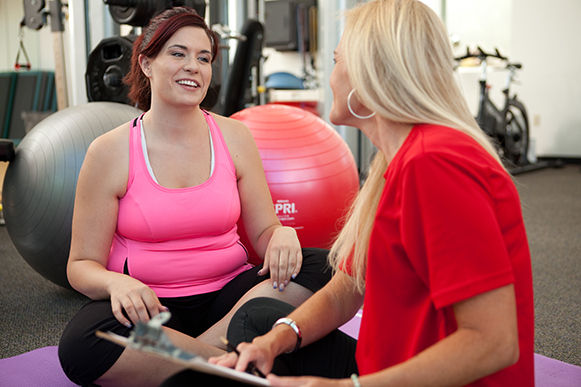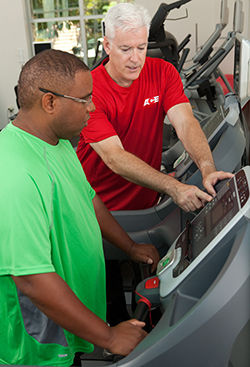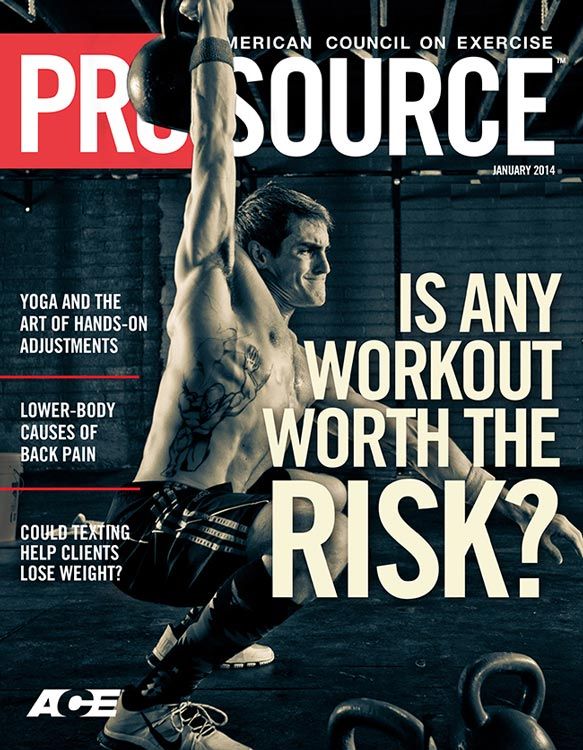
How many times have you told a potential client that exercise will make them feel better? While you know this is true in the long run, as a fitness professional you may also have forgotten what it’s like to start at square one. The truth is, when a person is overweight or obese and hasn’t moved his or her body in a way that would be considered exercise since high school PE class, chances are it will not feel good. It will hurt. And they may hate it.
“Obese clients have an entirely different set of motivators for exercise and don’t really enjoy exercise yet,” says Mark Kelly, Ph.D., an exercise physiologist. “They will not be at the starting point others are and may need to learn how to simply move first.”
“These clients have reached this point in their lives for many different reasons,” explains Rick DiScipio, M.Ed., assistant director of fitness, physical education, recreation and dance at Boston University. “Trainers need to understand those reasons in order to help [their clients] change their perspectives.”
Should You Tell it Like it Is?
If someone has contacted you about training, chances are they’re aware of their physical condition. In the words of several women who were asked their opinions on body-fat testing: “I don’t need some stranger to pinch my fat to tell me I’m fat.”
“Obese clients know they are overweight,” says DiScipio. “But you still need to make it clear that their weight may cause or is causing health concerns. The phrase, ‘your weight may be damaging your health,’ for example, may be a better approach.”
Should You Perform Body-fat Testing on Obese Clients?
“Body-fat testing makes people feel negative about their bodies and body dissatisfaction is an important predictor of eating disorders. Those who are overweight or obese are more likely to use unhealthy weight loss practices, which also may lead to more disordered eating and eating disorders. Focus on empowering others around health, not weight!”
—Mardie Burckes-Miller, Ed.D., professor of health education and director of the Eating Disorders Institute, Plymouth State University
“Skinfold measures can often be difficult to obtain on obese people due to the difficulty in finding the landmarks, in sampling the correct layers of skin and underlying fat, and due to the fact that some calipers not able to record large numbers. I would use circumference measurements (waist-to-hip, arms and thighs) to keep track of any body-composition changes.”
—Rick DiScipio, M.Ed., assistant director of fitness, physical education,
ecreation and dance at Boston University.
In other words, make it clear that while obesity can be an underlying cause of certain diseases, it’s not a given, just as being thin does not equate to being healthy. “When you use the phrase ‘you are fat’ or ‘obese’ you are basically telling them that their condition will automatically lead to serious health issues. Even if they are healthy, this could have an emotional impact, such as depression. We know from research that obesity is linked to many chronic diseases, but there are a few individuals who do not experience metabolic complications due to being obese, so don’t assume they do.”
Modify It
It’s also important for fitness pros to be aware of the challenges of being obese and exercising, says Natalie Digate Muth, M.D., M.P.H., R.D., Healthcare Solutions Director for ACE. “The trainer should be sensitive to how being overweight may affect the client’s experience, such as the size and positioning of exercise equipment and the location and visibility of workouts.”
Ask if they’re comfortable working out in the gym with other members or if they’d be prefer to exercise in a more private setting. And when in doubt as to whether or not they’ll comfortably fit on a weight machine, skip it to avoid embarrassment.
“Trainers need to put a large amount of thought into the process of dealing with an overweight client,” agrees DiScipio. “The primary goal for an overweight client is to keep them moving throughout the session, preferably standing. Some machines are not made for obese individuals, and a few clients, because of orthopedic concerns, will find it difficult to get up from the floor.”
It can also be difficult for them to lie flat on a weight bench. Start clients out in a reclining position for exercises such as the bench press or flys. You may also need to place something under the client’s head—a rolled-up exercise mat works well.
DiScipio recommends a mini-circuit of three to four exercises for a strength routine. “For instance, you could include bench squats, wall push-ups, dumbbell swings and medicine-ball slams. Have them go through the circuit one or two times, performing 12 to 15 reps of each exercise at a moderate pace. The client’s fitness level will determine the pace of the program.”
 For cardio, the treadmill is a good choice. Be realistic, however, about the duration and intensity. “In the beginning, you may need to keep the duration of exercise less than 10 minutes and gradually increase both duration and intensity over time,” says Mick Carper, owner of Complete Nutrition in Knoxville, Tenn., and Des Moines, Iowa. “[Your client’s] max heart rate should not exceed 50 percent for the first few weeks of training.”
For cardio, the treadmill is a good choice. Be realistic, however, about the duration and intensity. “In the beginning, you may need to keep the duration of exercise less than 10 minutes and gradually increase both duration and intensity over time,” says Mick Carper, owner of Complete Nutrition in Knoxville, Tenn., and Des Moines, Iowa. “[Your client’s] max heart rate should not exceed 50 percent for the first few weeks of training.”
Contrary to what many believe, obese people are often quite flexible. “Many heavy students are actually very flexible, balanced and strong,” says Colleen Saidman Yee, who is the featured instructor in Yoga for Weight Loss (DVD; Gaiam). “So don’t assume they’re compromised. Look at the individual in front of you and don’t generalize.”
Yee recommends using props for yoga poses. For example, have the client perform downward facing dog with his or her hands on a chair positioned against the wall. Standing poses can be done with a block or chair under the front hand or with the pelvis supported by the seat of the chair. Clients can stretch while seated in a chair rather than sitting or lying on the floor.
Many obese clients will experience hip, knee and back pain during exercise, largely because their skeletons have to support their extra weight. To help combat this discomfort, have them stretch frequently throughout their workout. Downward facing dog (performed using a chair as described above) is a great back and hamstring stretch.
It is not in the best interest of most obese clients to perform core work while lying on the floor. First, there’s the issue of getting down and up off the floor. The extra abdominal girth also makes it difficult and uncomfortable to perform exercises such as crunches. Instead, get creative with initial core work. Standing rotations on the cable crossover machine work well, as do straight-arm pull-downs with a straight bar. Have clients perform the plank with forearms or hands on a bench instead of on the floor.
Remember, it may not feel good at first for your obese clients to work out. They may voice their opinions about it, too. Don’t take it personally. Encourage them to simply look for opportunities to be more active during the day, explaining how studies show that making a mindful effort to move more throughout their day can burn more calories. You can also reassure them that, over time, movement will become less painful and feel easier. And who knows? They may even reach the day where they actually like it.





 by
by 

 For cardio, the treadmill is a good choice. Be realistic, however, about the duration and intensity. “In the beginning, you may need to keep the duration of exercise less than 10 minutes and gradually increase both duration and intensity over time,” says Mick Carper, owner of Complete Nutrition in Knoxville, Tenn., and Des Moines, Iowa. “[Your client’s] max heart rate should not exceed 50 percent for the first few weeks of training.”
For cardio, the treadmill is a good choice. Be realistic, however, about the duration and intensity. “In the beginning, you may need to keep the duration of exercise less than 10 minutes and gradually increase both duration and intensity over time,” says Mick Carper, owner of Complete Nutrition in Knoxville, Tenn., and Des Moines, Iowa. “[Your client’s] max heart rate should not exceed 50 percent for the first few weeks of training.”
